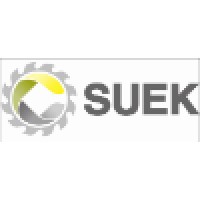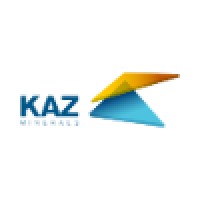Company Cyber Security Posture
NANA
NA Company Details
NA
NA
NA
NA
NA
NA
Scan still pending
NA
NA
Between 200 and 800
This score is AI-generated and less favored by cyber insurers, who prefer the TPRM score.
 NA Global Score
NA Global Score.png)

Company Scoring based on AI Models
| Model Name | Date | Description | Current Score Difference | Score |
|---|---|---|---|---|
| AVERAGE-Industry | 03-12-2025 | This score represents the average cybersecurity rating of companies already scanned within the same industry. It provides a benchmark to compare an individual company's security posture against its industry peers. | N/A | Between 200 and 800 |
Company Cyber Security News & History
| Entity | Type | Severity | Impact | Seen | Url ID | Details | View |
|---|
Company Subsidiaries

NA
Access Data Using Our API

Get company history
.png)
NA Cyber Security News
Exclusive: UAE giant eyes majority stake in Vedanta's Zambian mines in expansion drive
The mining investment arm of Abu Dhabi's most valuable company has offered to buy a majority stake in Vedanta Resources' Zambian copper ...

NA Similar Companies

SUEK
A major producer of thermal coal: no. 1 in Russia. In 2008, the production volume was 96.2 million tons. One of the main coal exporters: no. 1 in Russia. One of the key private investors in the power generation sector. One of the major job providers in the country: about 46,000 employees in 10 reg

Vale
We are a global mining company producing iron ore, pellets, and nickel, and we are committed to becoming one of the safest, most trustworthy mining company in the world. With a workforce of 120,000 employees, we work every day to transform natural resources into prosperity and sustainable developmen

Zijin Mining Group
Zijin Mining Group (紫金矿业集团) is an international mining company that currently runs various subsidiaries in 12 countries in Asia, Africa, Europe, South America, and Oceania. It is ranked No. 77 on Fortune's Top 500 Chinese Enterprises List in 2020 and No.778 on Forbes' Top 2000 Global Enterprises Lis

KAZ Minerals
KAZ Minerals is a high growth copper company focused on large scale, low cost, open pit mining in Kazakhstan and the CIS region. It operates the Aktogay and Bozshakol open pit copper mines in the Abay and Pavlodar regions of Kazakhstan, three underground mines and associated concentrators in the Eas

Anglo American
Anglo American is a leading global mining company and our products are the essential ingredients in almost every aspect of modern life. Our portfolio of world-class competitive operations, with a broad range of future development options, provides many of the future-enabling metals and minerals for

Alcoa
Alcoa (NYSE: AA) is a global industry leader in bauxite, alumina and aluminum products with a vision to reinvent the aluminum industry for a sustainable future. With a values-based approach that encompasses integrity, operating excellence, care for people and courageous leadership, our purpose is to

Frequently Asked Questions
Explore insights on cybersecurity incidents, risk posture, and Rankiteo's assessments.
NA CyberSecurity History Information
How many cyber incidents has NA faced?
Total Incidents: According to Rankiteo, NA has faced 0 incidents in the past.
What types of cybersecurity incidents have occurred at NA?
Incident Types: The types of cybersecurity incidents that have occurred include .
Additional Questions
What Do We Measure?
















Every week, Rankiteo analyzes billions of signals to give organizations a sharper, faster view of emerging risks. With deeper, more actionable intelligence at their fingertips, security teams can outpace threat actors, respond instantly to Zero-Day attacks, and dramatically shrink their risk exposure window.
These are some of the factors we use to calculate the overall score:
Identify exposed access points, detect misconfigured SSL certificates, and uncover vulnerabilities across the network infrastructure.
Gain visibility into the software components used within an organization to detect vulnerabilities, manage risk, and ensure supply chain security.
Monitor and manage all IT assets and their configurations to ensure accurate, real-time visibility across the company's technology environment.
Leverage real-time insights on active threats, malware campaigns, and emerging vulnerabilities to proactively defend against evolving cyberattacks.




